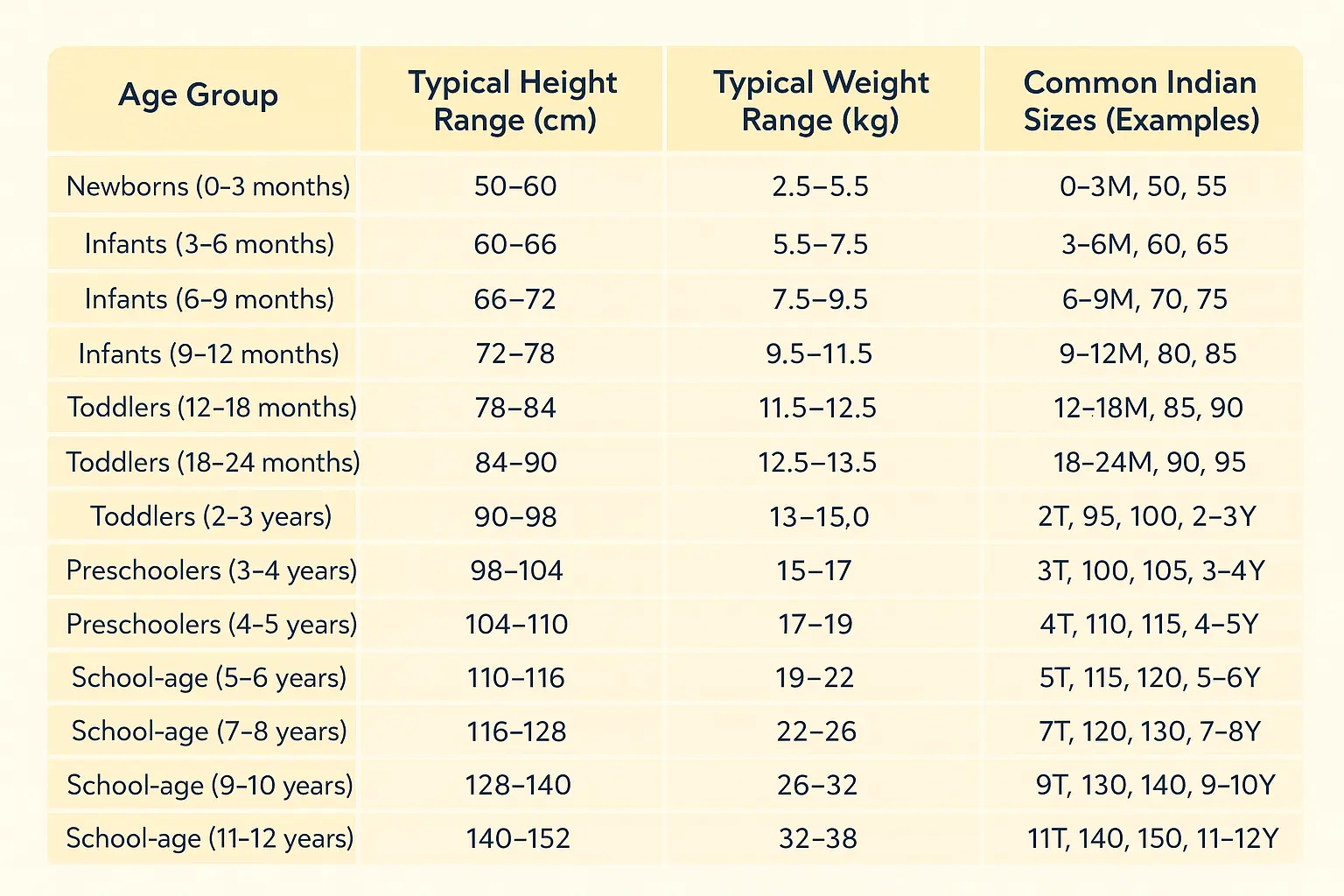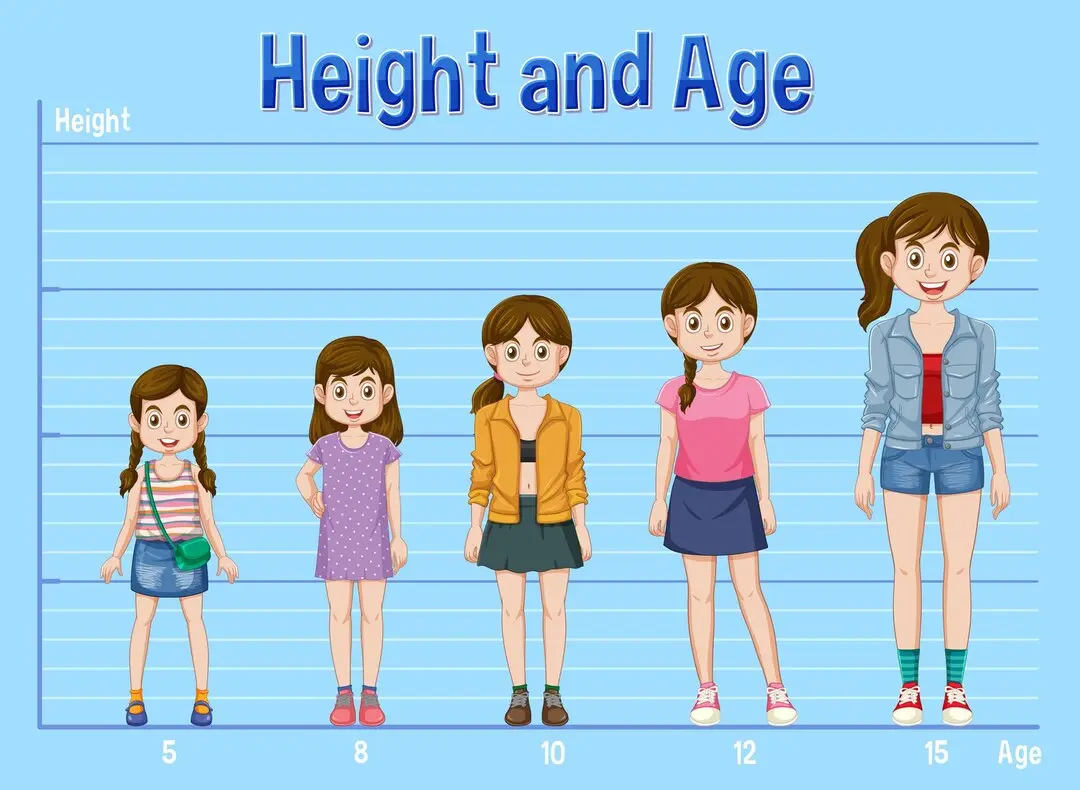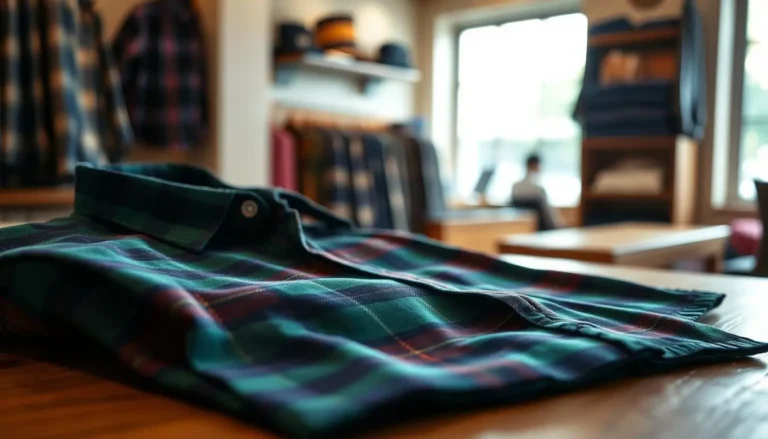Every parent has been there: standing in front of a rack of adorable kids’ clothes, utterly baffled by the sizing labels. Is a “2T” really for a two-year-old? Why does one brand’s “4-5 years” look entirely different from another’s? It’s a common struggle and picking the right size for your child’s clothing isn’t just about aesthetics; it’s crucial for their comfort, safety and even the longevity of the garment. This comprehensive guide aims to simplify the process, offering practical advice and an age-wise kids’ size chart specifically tailored for Indian parents. By the end of this read, you’ll be equipped with the knowledge to confidently choose clothes that fit perfectly, ensuring your little one is always happy and comfortable. We’ll delve into everything from accurate measuring techniques to understanding different brand variations and common mistakes to avoid.
Why Getting the Right Size Matters
Choosing the correct clothing size for your child goes far beyond just how it looks. Comfort is paramount; ill-fitting clothes can restrict movement, irritate sensitive skin and generally make a child feel uncomfortable throughout the day. Imagine a toddler trying to explore or play in pants that are too tight or a shirt that bunches up awkwardly. It’s frustrating for them, consequently hindering their natural development and play.
Furthermore, safety concerns are significant. Clothes that are too big can pose tripping hazards, especially for active toddlers. Long, baggy sleeves might get caught in objects and drawstrings or embellishments on oversized clothing can even present strangulation risks if not properly managed. Conversely, overly tight clothing can impede circulation or cause chafing. While children grow incredibly fast, ill-fitting clothes also tend to wear out differently. Stretched seams or strained fabric from being too small, or excessive friction from being too baggy, can shorten a garment’s lifespan. Ultimately, well-fitting clothes contribute to a child’s aesthetics and confidence, allowing them to move freely and feel good in what they’re wearing.
Understanding Kids’ Clothing Labels: More Than Just Age
When you glance at a kids’ clothing size guide India, you’ll quickly notice that age is often the most prominent indicator. However, it’s crucial to understand that age is merely a guide, not an absolute rule. Children of the same age can vary significantly in height, weight and build. Therefore, relying solely on an age label can often lead to ill-fitting purchases.
Beyond age, you’ll encounter other common metrics on labels, such as height, weight and specific garment measurements. Many international brands and increasingly Indian ones, provide sizing based on a child’s height in centimeters or weight in kilograms. Moreover, there’s a notable difference in sizing between brands. An outfit labeled “3-4 years” from one brand might be a perfect fit, while the same size from another could be too small or too large. This is especially true when comparing Indian brands, which might cater to specific regional average builds, with international brands that follow different standardized charts. Therefore, always investigate the full label details and any accompanying kids clothing size guide India provided by the specific brand to ensure the best fit.
The Essential Step: How to Accurately Measure Your Child
To truly nail the right size, especially when brand charts vary, learning how to measure kids for clothes size is indispensable. It might seem daunting with a wiggling child, but with a soft tape measure and a little patience, you can get precise measurements.
Here’s a detailed, step-by-step guide:
Height (Crown to Heel): Have your child stand straight against a wall with their heels touching the base. Use a flat object (like a book) placed on their head to mark the height on the wall, then measure from the floor to the mark. This is a critical measurement, especially as many brands now size primarily by height.
Chest Circumference: Wrap the tape measure around the fullest part of your child’s chest, just under their armpits. Ensure the tape is snug but not tight, allowing for a finger to slip underneath.
Waist Circumference: Locate your child’s natural waistline, usually above the belly button and below the rib cage. Measure around this point, keeping the tape comfortably loose.
Hip Circumference: Measure around the fullest part of your child’s hips and bottom. This is particularly important for pants, shorts and skirts.
Inseam: For pants, measure from the crotch seam down to the ankle bone. If measuring on your child, have them stand with legs slightly apart.
Sleeve Length: With your child’s arm slightly bent, measure from the shoulder seam down to the wrist.
Tips for Measuring a Wiggling Child: Try to make it a fun game! Use a favorite toy as a distraction, or measure when they’re relaxed, perhaps during screen time. Ensure they are wearing light clothing or just their undergarments for the most accurate results. Always use a soft, flexible tape measure and measure directly against their body, without pulling it too tight.
Your Go-To Age-Wise Kids Size Chart for India
While brand-specific charts are king, a general age-wise kids size chart can serve as an excellent starting point and a quick reference for typical measurements in India. Remember, these are averages and individual variations are common.
Age Group Typical Height Range (cm) Typical Weight Range (kg) Common Indian Sizes (Examples)
| Age Group | Typical Height Range (cm) | Typical Weight Range (kg) | Common Indian Sizes (Examples) |
| Newborns (0-3 months) | 50-60 | 2.5-5.5 | 0-3M, 50, 55, Newborn |
| Infants (3-6 months) | 60-66 | 5.5-7.5 | 3-6M, 60, 65 |
| Infants (6-9 months) | 66-72 | 7.5-9.5 | 6-9M, 70, 75 |
| Infants (9-12 months) | 72-78 | 9.5-11.5 | 9-12M, 80, 85 |
| Toddlers (12-18 months) | 78-84 | 11.5-12.5 | 12-18M, 85, 90 |
| Toddlers (18-24 months) | 84-90 | 12.5-13.5 | 18-24M, 90, 95 |
| Toddlers (2-3 years) | 90-98 | 13.5-15 | 2T, 95, 100, 2-3Y |
| Preschoolers (3-4 years) | 98-104 | 15-17 | 3T, 100, 105, 3-4Y |
| Preschoolers (4-5 years) | 104-110 | 17-19 | 4T, 110, 115, 4-5Y |
| School-age (5-6 years) | 110-116 | 19-22 | 5T, 115, 120, 5-6Y |
| School-age (7-8 years) | 116-128 | 22-26 | 7T, 120, 130, 7-8Y |
| School-age (9-10 years) | 128-140 | 26-32 | 9T, 130, 140, 9-10Y |
| School-age (11-12 years) | 140-152 | 32-38 | 11T, 140, 150, 11-12Y, (or Jr. S, M for teens) |

Note: This chart is a general guide only. Always cross-reference your child’s measurements with the specific brand’s size chart before making a purchase. Indian brands might sometimes use age as a primary label but base their actual garments on average height/weight for that age group within India.
Navigating Brand-Specific Size Charts in India
It’s common for parents to feel bewildered by the sheer variety in kids’ clothing sizes and the primary reason lies in brand-specific size charts. Each brand, whether Indian or international, develops its own sizing standards based on various factors, including their target demographic’s average body measurements, manufacturing processes and even the fit they aim for (e.g., slim fit vs. relaxed fit). Consequently, a “5-6 years” size from one popular Indian children’s wear brand might be noticeably different in its actual dimensions (chest, length, waist) compared to another.
Therefore, the golden rule for parents is to always check the specific brand’s size chart before purchasing, especially when buying online. These charts are usually found on the product page or a dedicated “size guide” section of the brand’s website. They will typically provide garment measurements corresponding to their sizes, often in centimeters or inches and sometimes also suggest age, height, or weight ranges.
You’ll observe that some brands primarily size by age, others by height and weight and some by specific garment measurements (e.g., “Size 24” might refer to a chest measurement in inches for a traditional Indian outfit). Furthermore, there can be distinct differences between Indian ethnic wear sizing (like kurtas, lehengas, or sherwanis) and Western wear sizing (like jeans, t-shirts, or dresses). Ethnic wear might use chest measurements as a primary size indicator, while Western wear might focus on age or a combination of age and height. Understanding these nuances is key to a successful fit.
Practical Tips for Smart Sizing Decisions
Beyond measurements and charts, several practical considerations can help you make smart sizing decisions for your child’s wardrobe:
Consider the Fabric: Fabrics like cotton can shrink slightly after the first wash, while stretchy materials like elastane blends offer more give. Factor this in; you might need to size up for cotton garments, particularly if your child is on the cusp of a size.
Account for Growth Spurts: Children grow rapidly and often in unpredictable spurts. It’s often a good strategy to size up slightly, especially for everyday wear or outer garments. A slightly larger item can accommodate growth and will last longer. Remember, it’s easier to roll up sleeves or hems than to deal with clothes that are too small.
Think About the Season and Layering: When buying winter wear or jackets, consider if your child will be wearing layers underneath. If so, a slightly larger size will provide adequate room and comfort without feeling bulky or restrictive.
When in Doubt, Size Up: This is a frequently repeated mantra among experienced parents. An item that is a little big can often be worn for a longer duration and minor alterations (like hemming) are usually straightforward. Clothes that are too small, however, are often unusable.
Reading Product Reviews for Sizing Insights: Online reviews can be incredibly helpful. Other parents often share feedback on whether an item runs true to size, smaller, or larger, providing real-world insights that complement the size charts.
Checking Return Policies: Especially for online purchases, familiarize yourself with the retailer’s return and exchange policy. This provides a safety net if, despite your best efforts, the chosen size doesn’t fit your child as expected.
Common Mistakes to Avoid When Buying Kids’ Clothes
Even with the best intentions, parents can fall into common sizing pitfalls. Being aware of these can save you time, money and frustration:
Buying Purely Based on Age: As discussed, age is a guideline, not a definitive rule. Ignoring your child’s actual measurements and build can lead to ill-fitting clothes.
Not Measuring Regularly: Children grow fast! What fit last month might not fit this month. Make it a habit to measure your child every few months, especially during growth spurts, to keep their current dimensions updated.
Ignoring Brand Variations: Assuming all brands follow the same sizing chart is a recipe for disappointment. Always, always check the specific brand’s size guide before adding items to your cart.
Forgetting About Shrinkage: Natural fabrics, particularly cotton, can shrink. Not accounting for this can mean a perfectly sized garment becomes too small after the first wash.
Buying Too Many Clothes in One Size: Given how quickly children grow, it’s wise to buy only what’s immediately needed in their current size and perhaps one size up for future use, rather than stocking up extensively.
Next Read:
Cute Baby Clothes 0-3 Months: Soft, Cozy & Trendy
XXXXXXXXL Size Cxx clothing – A Complete Guide to Comfort & Style
The Spark Shop 6-9 Months Old Baby Clothes
Frequently Asked Questions (FAQs)
How do I know if my child is between sizes?
If your child’s measurements fall between two sizes on a chart, it’s almost always recommended to size up. For instance, if their height suggests a “4-5 years” size but their chest is closer to a “5-6 years” size, opt for the larger one. Children grow rapidly and a slightly larger garment will last longer and provide more comfort. You can always roll up sleeves or hems if needed.
Should I buy clothes a size bigger for kids?
Yes, in most cases, it’s a smart strategy to buy clothes a size bigger for kids, especially for everyday wear, casual outfits, or items like jackets and sweaters. This allows room for growth spurts and ensures the garment will last longer. However, for special occasion wear or items where a precise fit is crucial (like tailored shirts or formal trousers), stick closer to their current measurements, perhaps allowing for just a little room.
Why are kids’ clothing sizes so inconsistent?
The primary reason for inconsistency is the lack of a universal sizing standard across the globe and even within a single country like India. Each brand develops its own unique size chart based on various factors such as their specific manufacturing measurements, target customer demographics and desired fit (e.g., slim, regular, loose). Additionally, differences in fabric stretch and garment style can also contribute to perceived inconsistencies.
What’s the difference between ‘slim fit’ and ‘regular fit’ in kids’ clothes?
Regular fit kids clothes are designed to be comfortable and offer a standard amount of room around the body, allowing for ease of movement. ‘Slim fit’, on the other hand, is cut closer to the body, offering a more tapered and snug silhouette. While slim fit can look stylish, ensure it doesn’t restrict your child’s movement or cause discomfort, especially for active play.
How often should I measure my child for clothes?
For infants and toddlers (0-3 years), it’s advisable to measure your child every 2-3 months as they experience rapid growth spurts. For preschoolers and school-age children (3 years and above), measuring every 4-6 months is generally sufficient, unless you notice a sudden growth spurt or significant weight change. Keeping updated measurements helps ensure you’re always buying the right size.
Conclusion:
Navigating the world of kids’ clothing sizes in India doesn’t have to be a bewildering experience. By understanding that age is a guide and not a rule, taking accurate measurements of your child and always cross-referencing with brand-specific size charts, you can confidently pick clothes that fit perfectly. Remember to consider factors like fabric, growth spurts and layering. Ultimately, finding the right fit ensures not just comfort and happiness for your child, but also better value for your purchases. Use this guide as your helpful resource and happy shopping!

Bhawna Anand is a talented content writer and editor with over 5 years of experience crafting engaging content for Abmantra, a popular blogging website. Her areas of expertise include Fashion, Festival, Gifting, Ecommerce, Spiritual and Travel content. Bhawna’s informative and engaging writing style has helped Abmantra attract a loyal readership and build a strong online community.
When not at work, Bhawna enjoys traveling the world, which often inspires her to write captivating travel pieces that transport readers to new destinations. She also loves to sing, cook, and read good novels.




